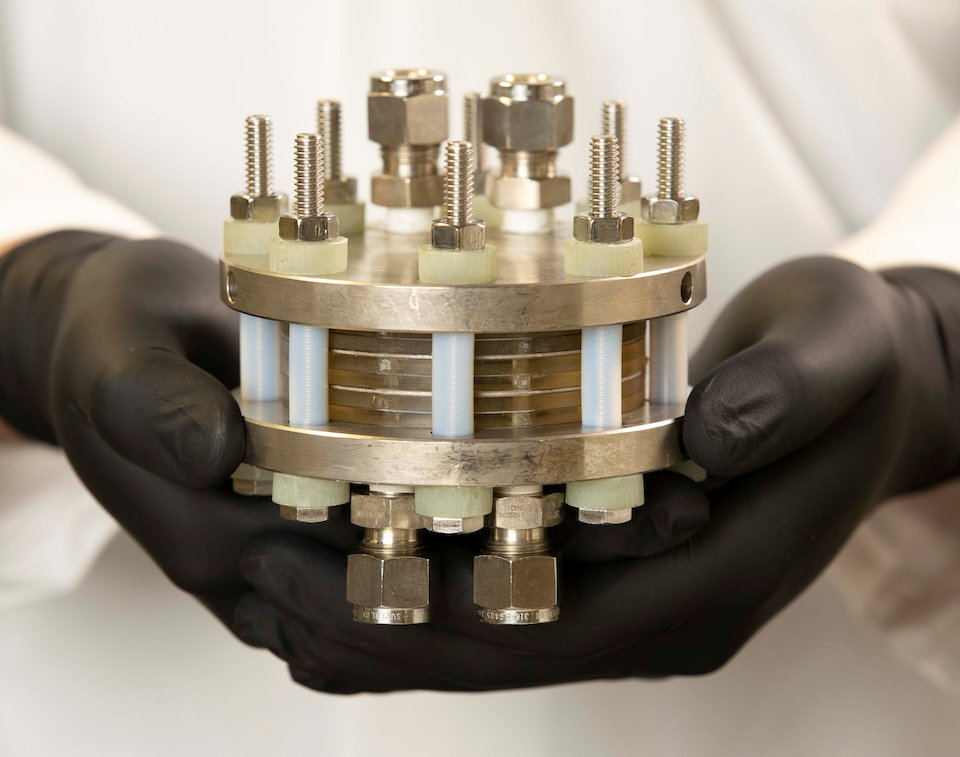
According to the DoE, the work at KU is part of $750 million in funding for 52 projects across 24 states “to dramatically reduce the cost of clean hydrogen and reinforce American leadership in the growing hydrogen industry.”
Green hydrogen is a key tool in the worldwide push to slash carbon emissions, especially in the industrial, transport and agricultural sectors. However, conventional hydrogen production emits greenhouse gases. By contrast, green hydrogen is produced with renewable energy, making it crucial to achieving net-zero goals.
“The whole world is interested in green hydrogen,” said Kevin Leonard, professor of chemical & petroleum engineering at KU, as well as a member of KU’s Center for Environmental Beneficial Catalysis and chief science officer of Avium. “Hydrogen is a commodity chemical — nearly 100 million tons are produced annually worldwide. It’s used in fertilizers, cement production, metal processing and refining. Traditionally, it’s made from natural gas, but that process emits CO2. This results in hundreds of millions of tons of greenhouse gas emissions.”
Back in 2017, Leonard and KU graduate student Joseph Barforoush developed new catalysts that make green hydrogen production more efficient, which led to the founding of Avium, based in Lawrence.
“We've gone through the Small Business Innovation Research grants, receiving funding from both the National Science Foundation and the DoE,” Leonard said. “As part of the Bipartisan Infrastructure Bill, $750 million was allocated to bolster green hydrogen efforts in the U.S., including the award to Avium and KU.”
The work at KU and Avium will develop new catalysts and technologies to improve the efficiency and reliability of green hydrogen production. According to Leonard, the benefits might well extend beyond sectors where hydrogen is already used.
“People are interested in green hydrogen for traditional applications like those I mentioned, but also for emerging ones,” he said. “One example is sustainable aviation fuels. Green hydrogen will be critical in creating sustainable, petroleum-free fuels, specifically for aviation.”
The KU researcher said clean hydrogen is also gaining interest for renewable energy storage.
“Take Arizona, for example,” he said. “During winter days, the solar panels on the grid can produce much more energy than is needed. However, in the summer, when it’s 110 degrees and air conditioners are running, solar energy alone cannot produce enough electricity, specifically in the evening. Storing excess energy from January and February to use in July and August is a challenge. However, using green hydrogen to store that energy, then converting it back to electricity later, may prove effective for grid energy balancing.”
KU students and postdoctoral researchers will receive training as part of the work. But further, the award will support technical training and career-building opportunities for students at the Dwayne Peaslee Technical Training Center in Lawrence and Urban Tec in Kansas City, Missouri.
“We’ll collaborate with Peaslee to provide technical training for students entering fields like electrical work and HVAC, ensuring they are familiar with the specialized skills required for green hydrogen processes, such as handling high-voltage lines or understanding the systems involved in hydrogen energy,” Leonard said. “We are also partnering with Urban Tec to launch the Avium Summer Experience, where students from Kansas City will visit KU to explore university life. They'll also tour Avium and Peaslee Tech to learn about the different paths available to them — whether through apprenticeships or startup environments.”
Leonard said the transition to a clean-energy future, especially the DoE’s stated Hydrogen Shot goal, would depend in part on the development of technology like Avium’s catalysts.
“The U.S. is really pushing towards sustainability,” he said. “There's a federal target to produce green hydrogen for just a dollar per kilogram by 2031. The point is that green hydrogen will become a key part of the transition to clean energy. Green hydrogen can help make the chemical industry more sustainable by enabling the more sustainable production of fuels and fertilizers.”

